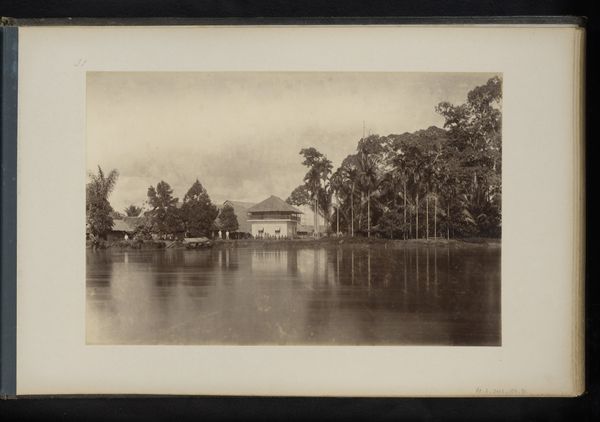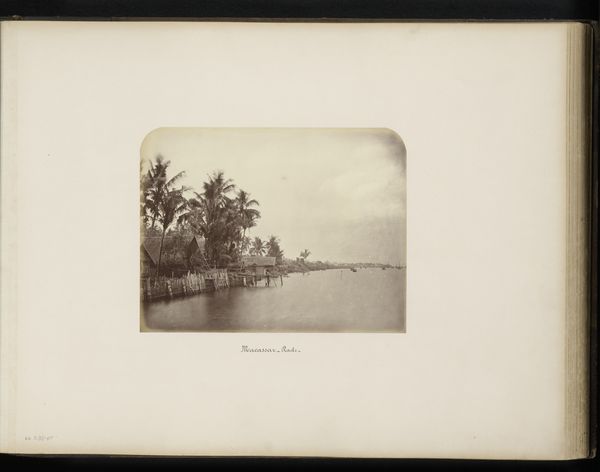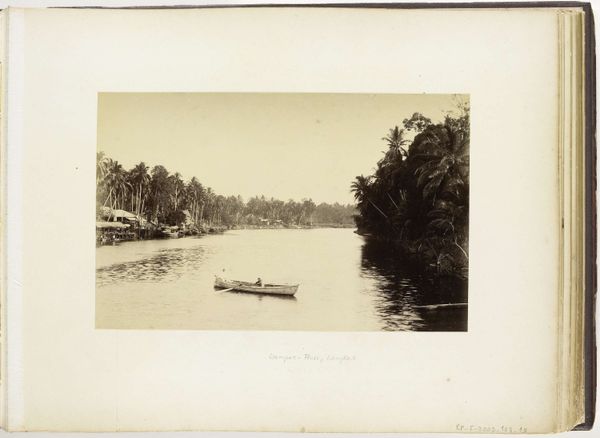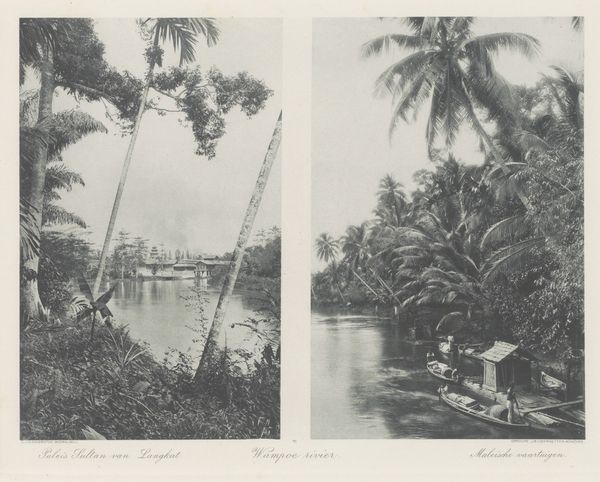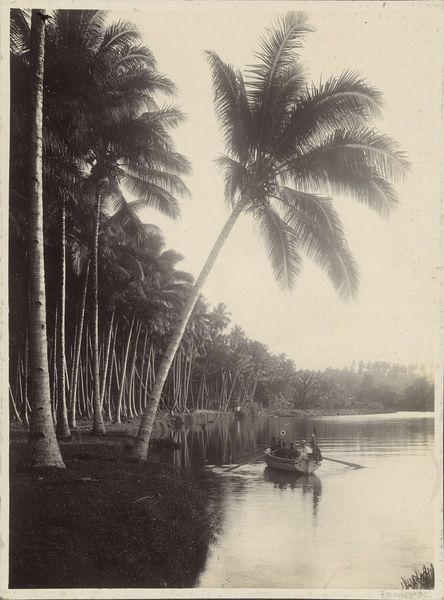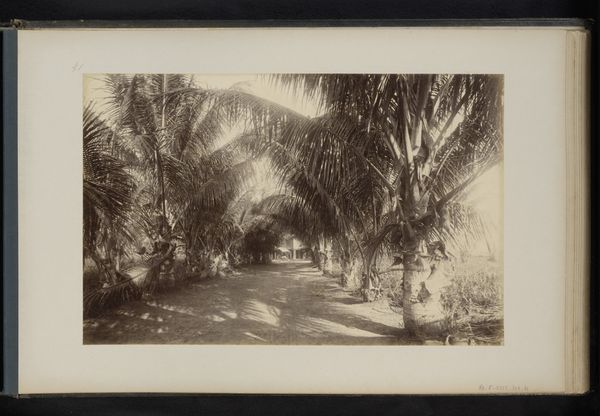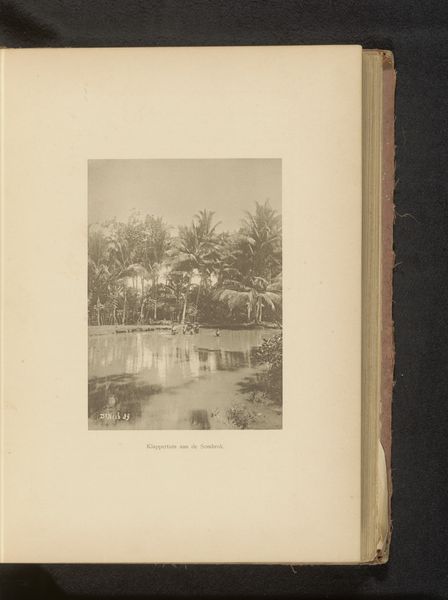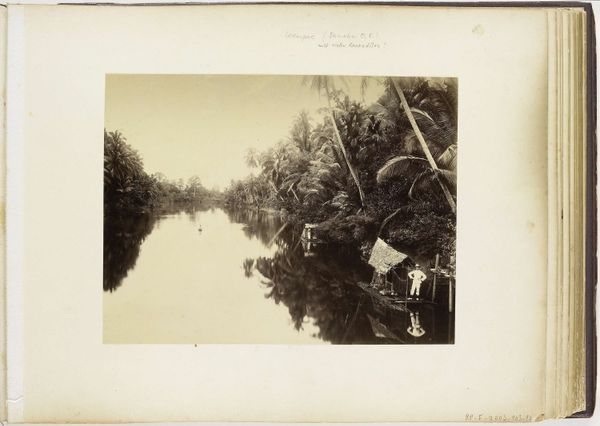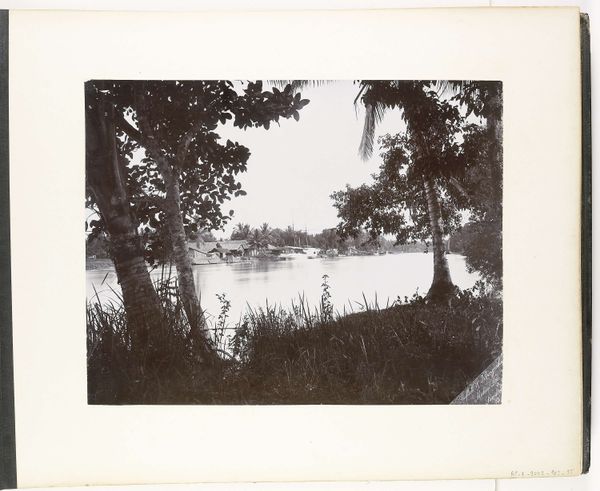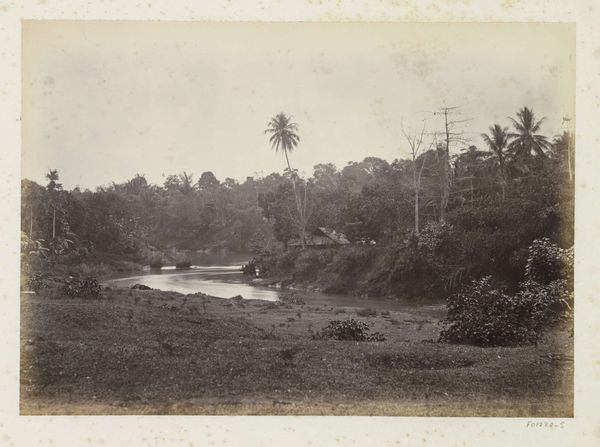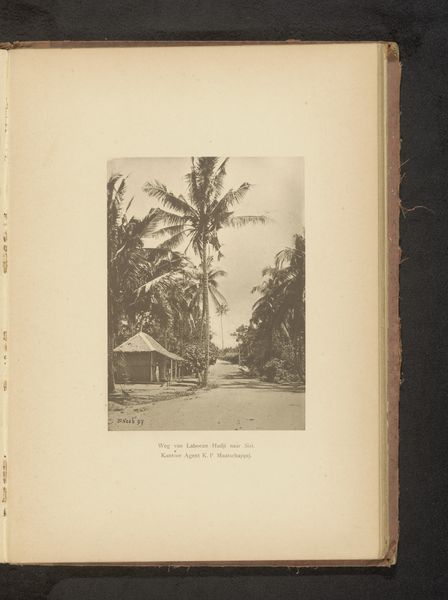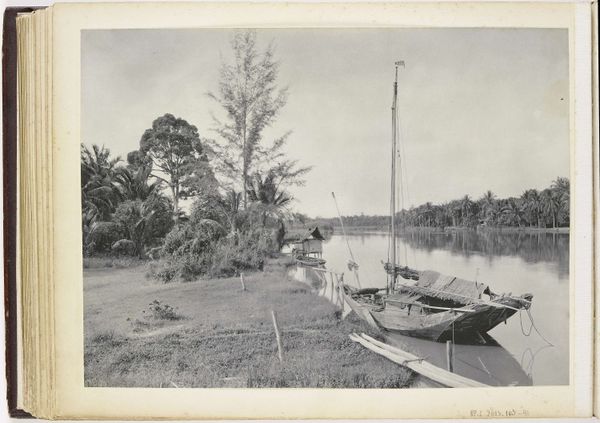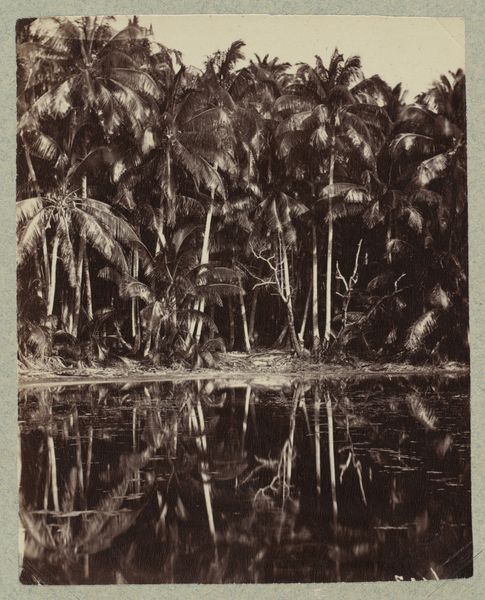
photography, albumen-print
#
landscape
#
river
#
photography
#
coloured pencil
#
orientalism
#
albumen-print
Dimensions: height 265 mm, width 355 mm
Copyright: Rijks Museum: Open Domain
Curator: This photograph, attributed to Heinrich Ernst & Co, captures a view of the Wampoe River in Sumatra, likely taken between 1890 and 1900. It’s an albumen print. Editor: My initial reaction is one of quiet stillness. The soft sepia tones create a sense of faded memory. There’s a calmness in the mirrored reflection of the trees on the water, disrupted only by a lone figure standing by the riverbank. Curator: It certainly invites reflection. The figure could represent a gaze both of ownership and perhaps also the looming disruptions that colonization was inflicting on this region. The photographic process itself played a role in how the West constructed its understanding of Southeast Asia. Consider how the "exotic" landscape becomes a commodity, presented for Western consumption and reinforcing existing power dynamics. Editor: Precisely. Palms have long stood as potent symbols of the exotic Other. Here they border a scene composed to feel both abundant and subdued, projecting ideals of fecundity combined with tranquility. The river itself holds multiple symbolic layers, a connector of people and places, but here seems almost frozen. Is this visual metaphor for colonial domination over a landscape, a population? Curator: Perhaps that tension, between perceived serenity and latent disruption, speaks to the complexity of that period. The deliberate staging of the lone figure—almost diminutive within the vastness of the scene—could indicate feelings of alienation but also speaks of a perceived sense of domination that resonates within the gaze of the other, an intentional commentary about control of space. Editor: Indeed, it also points to how integral symbolic tropes became. Notice the specific angle and cropping; these frame a vision where 'tropical' visual signifiers meet composed, almost sterile ideals of order, of scientific objectivity. It strips away local complexities. Curator: By focusing on power dynamics inherent in representation and display, and reflecting critically about how these landscapes are presented for both viewers today as well as historically situated audiences is useful work when engaging this imagery today. Editor: This photo holds both a sense of yearning and caution. I am interested in unraveling that double meaning it evokes; one that holds historical power, both real and imagined in ways that can hopefully make people pause today.
Comments
No comments
Be the first to comment and join the conversation on the ultimate creative platform.
